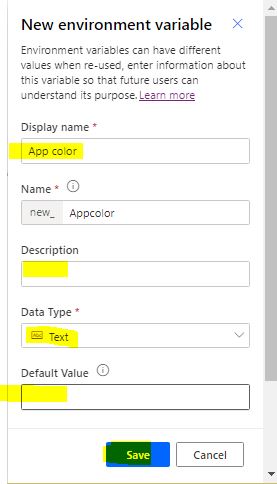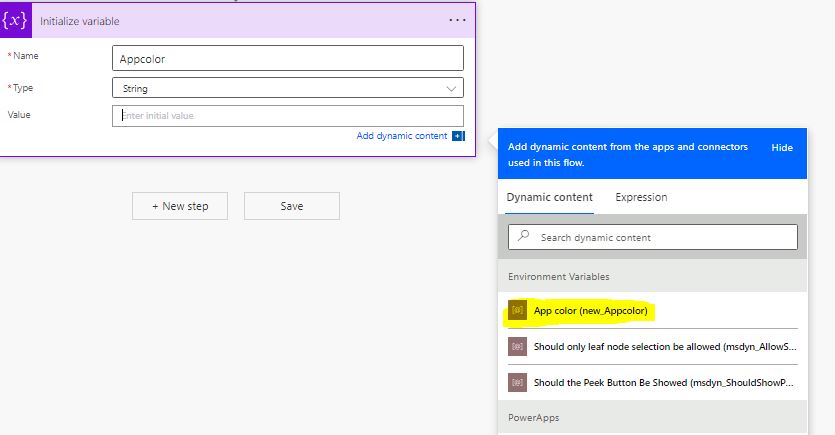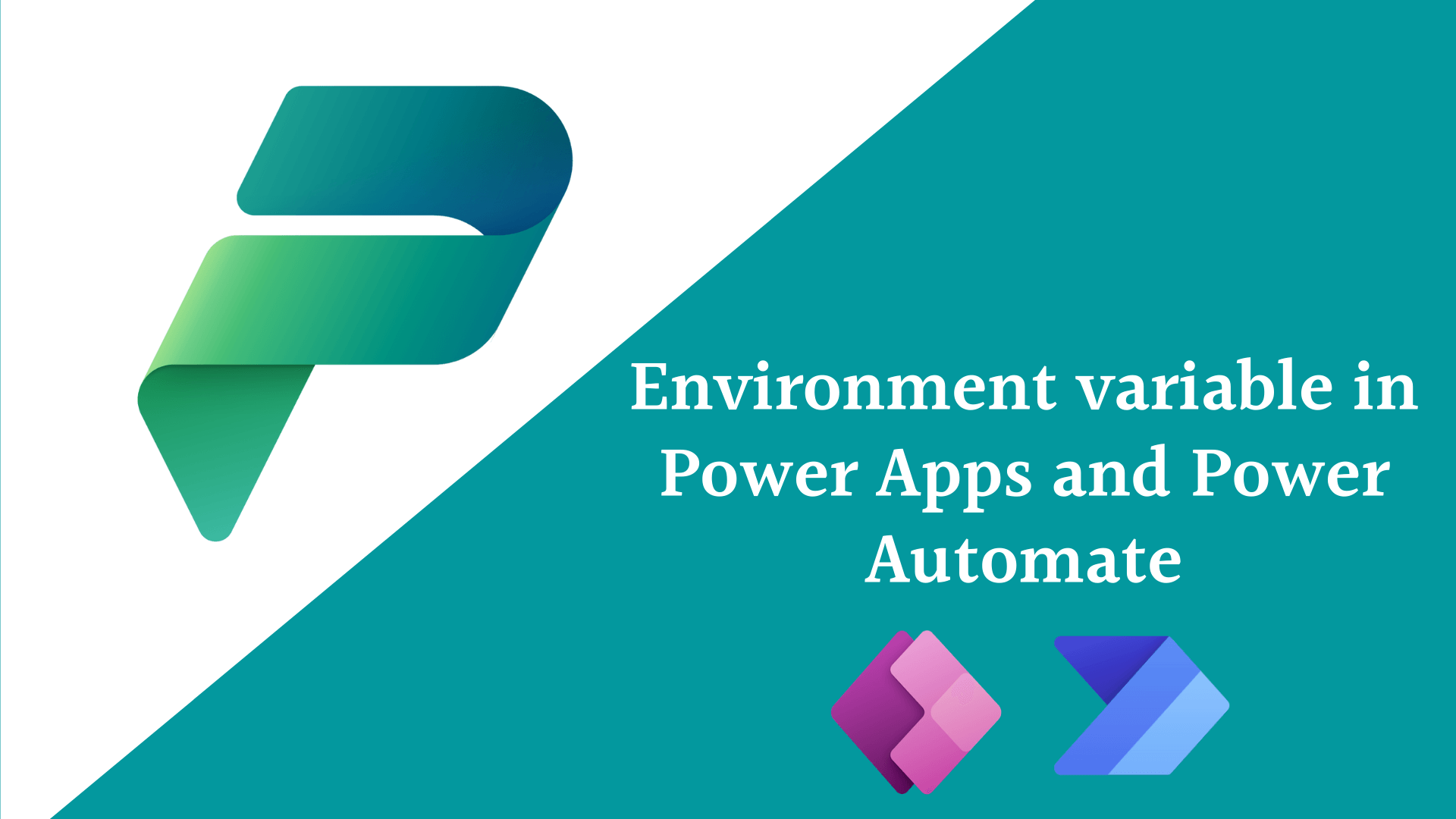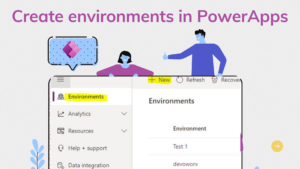In this blog post, we will discuss what is environment variable in power platform, how to create and how to use?
What is Environment variable in power platform?
- In the Power Platform, environment variables are configurable values that can be used to manage settings or parameters within a specific environment, you can use environment variables to store values that can be accessed across multiple flows, Apps or other resources within the same environment.
- They’re on an environment level.
- Each environment in the Power Platform can have one or more environment variables associated with it.
- You can reference ” Access” them in the PowerApps ,Power Automate, or Power BI to dynamically retrieve and use their values within an application
- Environment variable created inside a solution.
- If you want to use the same environment variable in another environment, you will need to recreate it in that environment
Environment variables in Power Apps
In Power Apps , you can use environment variable to store and retrieve data across the application, making it easier to manage and maintain data as they provide a flexible and convenient way to store and manage data that is used throughout your application.
Examples of environment variables in Power Apps:
- You can store the API key in an environment variable while using external APIs in your app, so you can manage and update the API key without having to update your app code.
- You can save user preferences, such color or language settings in an environment variable. This allows you to personalize the user experience without having to store user data in a database.
- If you have any constant values that you use throughout your app, such as tax rates or shipping fees, you can store these values in an environment variable
Environment variable in Power Automate
In Power Automate, you can use environment variables to store values that can be accessed across multiple flows or other resources within the same environment.
Examples of environment variables in Power Automate
- You Can store a URL or file path in an environment variable and reference it in different flows in this environment.
- You can store secret values, such as API keys, that should not be hard-coded in your flows.
- Environment-specific values, such as those unique to a development, test, or production environment, can be stored in environment variables. You can quickly transition between various environments by using environment variables without having to change your flows.
Create environment variable in power Platform
- Go to the Power Automate portal, or Power Apps make site and select the environment in which you want to create the environment variable.
- Click on the “Solutions” button in the left-hand navigation menu and select your Solution that will store your environment variable, or create new solution.
- Click on the “New” button to create a new environment variable.

- Provide a name for the environment variable and select its data type (e.g., Decimal number, JSON, Text,Yes/No, DataSource and Secret).
- Enter a default value for the environment variable (this is optional).
- Click on the “Save” button to create the environment variable.

Once you have created an environment variable, you will find them under the environment variable as shown below,

Use Environment variable in Power Automate
you can use it in your flows by referencing its name, for example if you want to initialize variable with your environment variable, you can find the environment variables you created in the add dynamic content as shown bellow

Use Environment variable in Power Apps
The Environment variable stores in ‘Environment Variable Definition’ and ‘Environment Variable Values’ tables, we can add these tables to use the environment variables.
for example here, I will display the default value of the Environment variable that we created before “App color”.

Managing Environment variables
- Environment Variable in power platform can be created and managed through the modern solution interface or by using code.
- A separate JSON file is created within your solution package for the values, which can also be managed in source control and modified in a build pipeline.
Conclusion
Each environment in the Power Platform can have one or more environment variables associated with it, which can be used to store information such as API keys, connection strings, or other configuration values that may be needed by Power Apps, Power Automate, or Power BI within that environment.
The basic application lifecycle management (ALM) of moving applications between Power Platform environments is enabled by environment variables. Except for a few key external application references (such as tables, connections, and keys) that differ between the source and destination environments.
See Also
- How To Use PowerApps Coalesce Function Correctly?
- How Power Automate Add Working Days To Date?
- How Power Automate Exclude Weekends And Holidays Between Dates?
- How To Format Date In Power Automate?
- Power Automate Add Days To Date
- How To Use PowerApps DateDiff Function?
- PowerApps Parse JSON Example
- How To Use Switch Function In PowerApps?
- PowerApps Lookup Function Examples : Complete Tutorial
Join us
- Subscribe to Power Platform Geeks.
- Register to Saudi Arabia Power Platform User Group.
Need Help
- Have a related question? Please ask it at deBUG.to Community.




Thank you for explaining what environment variables are in the Power Platform. I appreciate that you provided examples of how they can be used in Power Apps and Power Automate, such as storing API keys, user preferences, and constant values. I also found it helpful that you included the steps for creating and managing environment variables.